Home cinema was around long before VHS tapes hit the scene in the late seventies, and owning a personal screening room traces its origins back more than a century. Even during the era of Nickelodeon picture houses in the early 20th century, wealthy Hollywood execs could be found in their own darkened rooms, adjusting recliners, and kicking back for that special feature presentation. But in those early years, you would normally need to rely on expensive 35mm reel-to-reel projectors (as found in commercial cinemas) – as well as your own projectionist – to produce images in the home, so the private screening room was a rarity. Consequently, after The Great War, other more compact and manageable film formats started to emerge.
By the mid-1960s, a revolution took place in the form of Super 8mm film. Suddenly the act of beaming a favorite movie onto a living room wall was a luxury that the masses could now enjoy. The worldwide leading manufacturer of Super 8 projectors, Eumig of Austria, was producing over half a million projectors a year by 1976, while the public could increasingly opt for a big screen experience at home as an alternative to watching a small black and white TV. Collecting Super 8 films became an obsession for thousands of cinema devotees before the VHS revolution, but the magic of projected celluloid film in the home still hangs on to this day. Like the return to vinyl for audio enthusiasts, there is now a growing curiosity for collecting and showing vintage film in the home.
Gauging Interest
The driving force for residential film projectors at home was not only film collecting, but movie-making itself. The market for film formats less bulky than professional 35mm film goes back to 1923 when Eastman Kodak introduced its ‘amateur’ stock, 16mm. Marketed as a budget alternative for keen makers of silent films, the company sold its first ‘outfit’, consisting of camera, projector, tripod, screen and splicer for US$335 ($5,034 in today’s money). 16mm’s acetate base, as distinct from 35mm’s flammable nitrate base, made this new film gauge appealing to household users. The ability to rent and buy commercial films from the Kodascope Library was a further attraction for customers of this new equipment. In 1935, optical soundtracks became available on 16mm stock, and amateur filmmakers, documentarians and news stations continued to use the format right up until the 1990s. Before the VCR arrived in schools in the 1970s, 16mm film projectors remained the most popular AV educational tool, as well as the chief means by which to show rented commercial films in institutions.
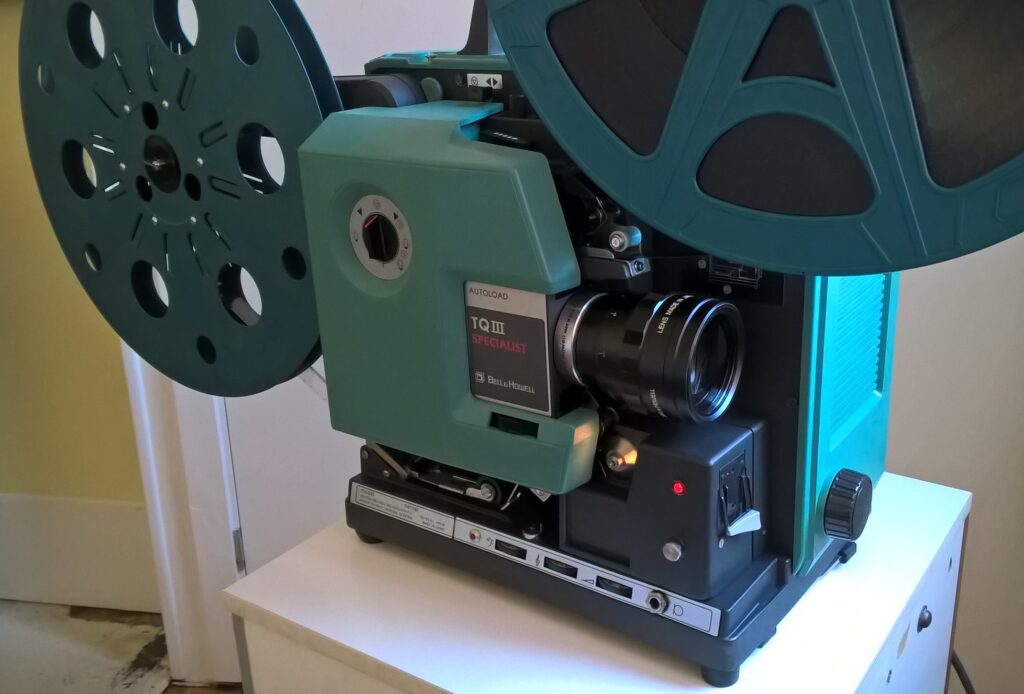
Bell & Howell TQIII 16mm projector
In the early 1920s, French company Pathé Frères introduced the 9.5mm film format primarily for collectors of commercial movie titles (including Mickey Mouse shorts and feature films such as Alfred Hitchcock’s Blackmail), although it also became a favorite with amateur content creators. Its slightly awkward single central sprocket hole mechanism meant that cheap toy projectors destroyed a lot of early films, and the arrival of Standard 8mm film in 1932 largely outmoded the gauge. There are many film collectors today who concentrate exclusively on this format.
Also known as Regular 8, Eastman Kodak’s Standard 8mm film used side-mounted sprocket holes, identical in size to those on 16mm prints. Modified 16mm stock formed the basis of spools inserted into a Standard 8 camera, which needed removing and turning over mid-filming to render images down both sides of the exposable area. Major studios began to release what became known as ‘package movies’ for collectors – usually commercial shorts, cartoons or clips from features – but few were more than 200ft in length (about 8 minutes), and Standard 8 projectors with sound were rare.
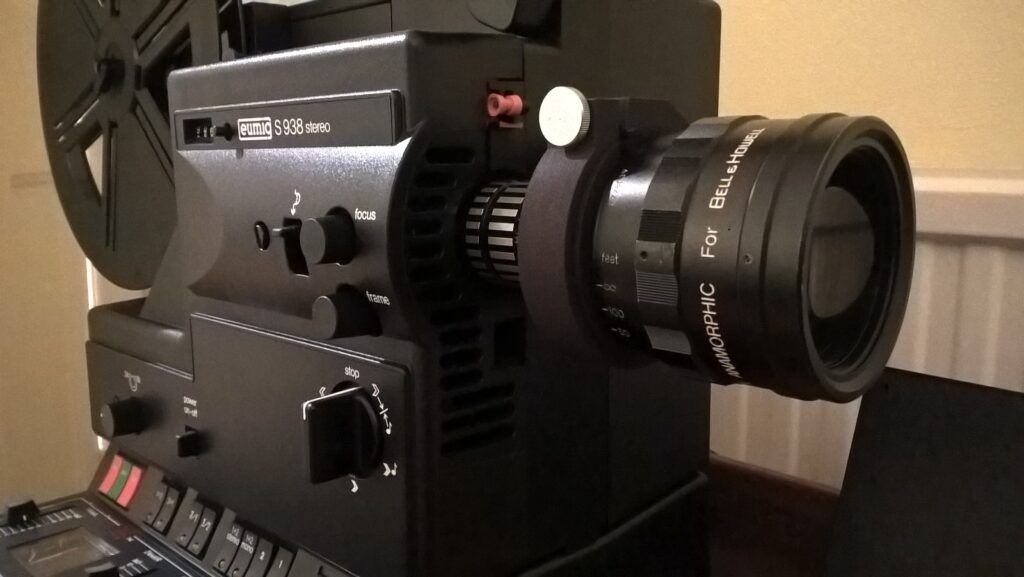
Eumig S938 Stereo Super 8 projector
Eastman Kodak transformed the home movie industry again in 1965 with its brilliant innovation, Super 8 film. Smaller sprocket holes than Standard 8 allowed for a larger exposed picture area, and oxide stripes on both edges of the stock provided the means by which to easily record sound during image capture, or later during the editing process at home. Fujifilm, meanwhile, introduced its competing format known as Single-8. This Japanese challenger used a polyester (rather than acetate) film base, and its cartridge loading system required the use of proprietary licensed cameras for shooting, even though the final developed film would run fine in a Super 8 projector.
Super 8 projectors at a variety of price points, and with sometimes a huge range of features, could be purchased from camera stores across the USA in the 1970s, with the bulk of the manufacturers hailing from Austria (Eumig), Germany (Bauer) and Japan (Elmo, Sankyo, Chinon), while America’s own Bell & Howell was also a major player. By the end of the decade, anamorphic lenses were available for 2.66:1 CinemaScope presentations of commercial releases, while two-channel stereo and Dolby Stereo could exploit both magnetic sound stripes (the second designed originally for ballast as the film ran through the projector).
Package Delivery
The thrill of Super 8 was unquestionably the wide selection of films available to collectors. Prior to the availability of commercial VHS tapes, there were literally thousands of film titles for purchase by mail order, or at photographic retail stores. Some specialist manufacturers and outlets continued to strike film prints well into the 2000s, even though projector production all but ceased by the late 1980s.
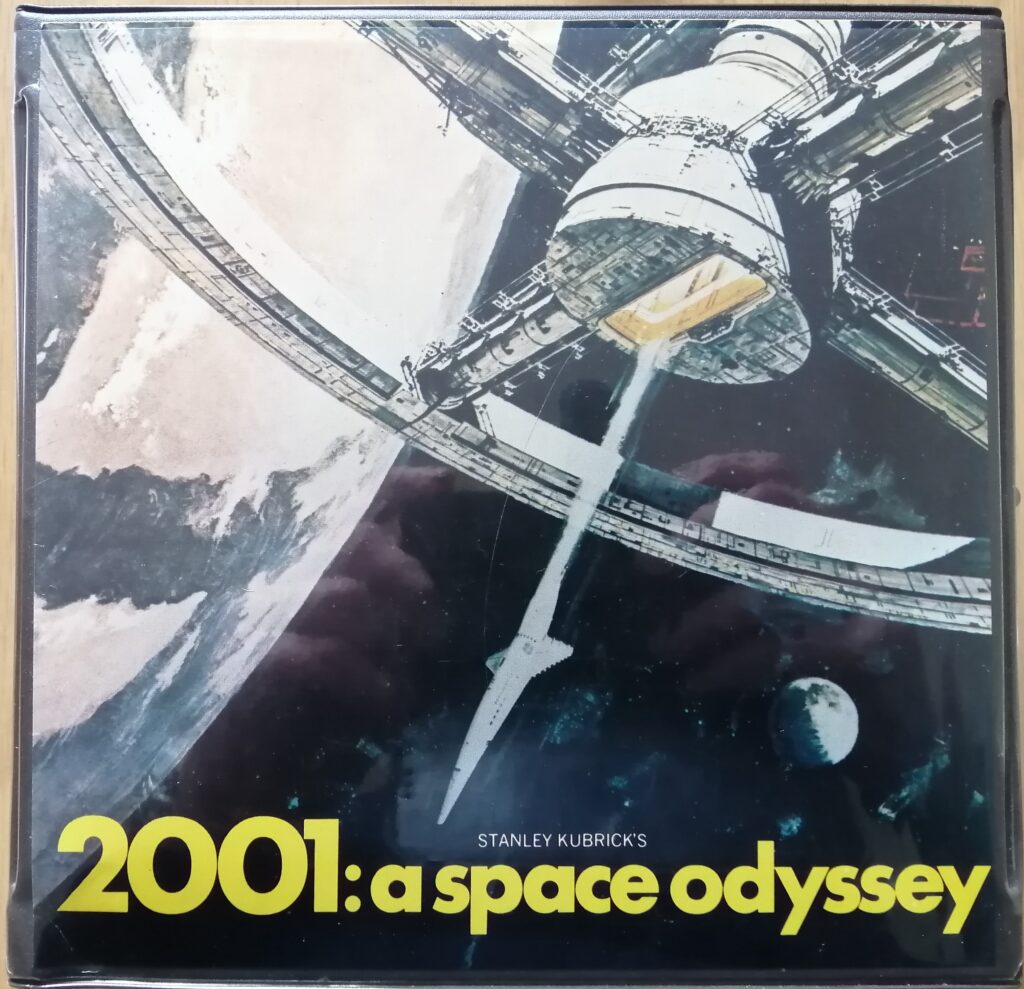
2001: A Space Odyssey 8 x 400′ Super 8 feature released by Ken Films, NY
The most popular package movies to buy were 17-minute highlight reels (mounted on 400ft spools) of major feature films, and which the Hollywood studios released directly or via third parties. A highlight reel would include a usually skillful edit of an entire feature film with beginning, middle and end intact, and usually cost $30 for a recent release. To compete with the proliferation of VHS, Warner Bros., Fox, Disney and Columbia presented their titles in evermore alluring packaging, while Universal Pictures’ Universal 8 distribution arm pushed out a series of beautifully-transferred reels from its archive, housed in rugged injection-molded casings, and which included Hitchcock’s Psycho and The Birds, disaster movies, and legacy horror.
Every taste was catered for, from the latest tent-pole Hollywood offerings, to the rarest Harold Lloyd silent caper. Paramount Pictures released full length feature films on 6 or 7 x 400ft reels, including Grease, Saturday Night Fever and Marathon Man, while UK-based Derann Film Services (who sadly finally closed doors in 2011) specialized in full-length British greats from the Hammer vaults and Ealing Studios, and went on to release unabridged features such as Alien, Poltergeist and Raiders of the Lost Ark. German-based Kempski, meanwhile, produced beautiful full-length prints of Ben-Hur and West Side Story on mylar stock, in both Cinemascope and stereo sound. Walton Sound and Film Services in London also provided a host of excellent abridged and feature prints, mostly gleaned from the Rank catalogue. Price tags were usually north of $300 for a modern feature, so film collecting at that level was never a game for the faint-hearted.
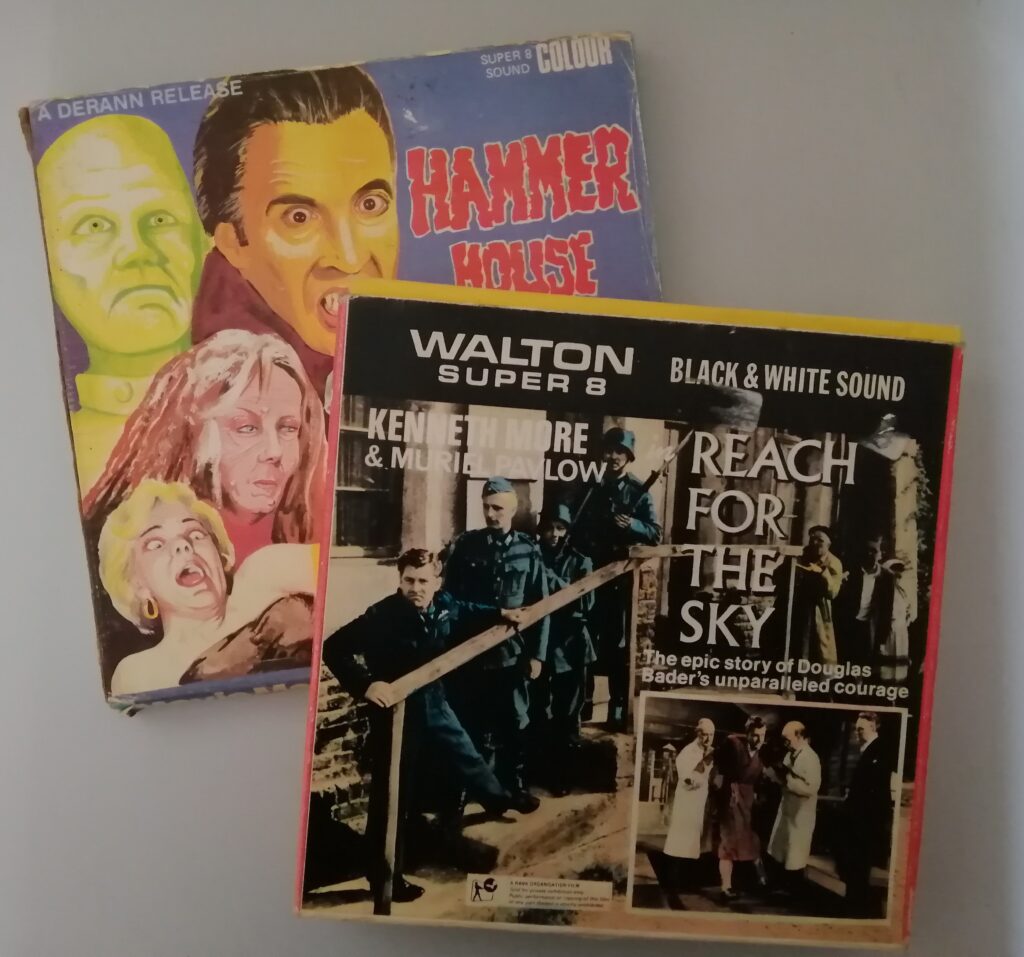
Collectors of 16mm titles were also rewarded by the disbandment of film libraries in the 1980s, which left thousands of titles in circulation even to this day. Perusal of eBay and other auction sites will show both Super 8 and 16mm sought-after titles in good condition fetch eye-watering prices.
Fade to Black
Not everything is perfect about film. Colors fade over time, prints get scratched, the projectors are usually noisy (and should ideally be in a booth), and putting on a movie show is hard work. But if you’re even remotely repelled on occasion by the clinical sterility of your Blu-ray Transformers collection, then you might just be in the market for a film projector.
The act of watching film in the home is quite unique. Showing a Super 8 or 16mm trailer, cartoon or selection of cinema adverts before your main 4K/Dolby Atmos digital feature can be an intriguing way to kick off your movie night, and something that I regularly do. One could even make the case for no home cinema being complete without a Super 8 or 16mm machine to sit alongside your Epson or JVC. If you’re interested to explore this side of our hobby, check with your relatives to see if they have a film projector and selection of movies in their loft. A lot of these gadgets got sold, and a lot of them are still in existence. If you’re not getting any joy on that front, then there are still dealers like The Reel Image in Ohio or Classic Home Cinema in the UK, each of which might just help you discover a world of untapped euphoria.
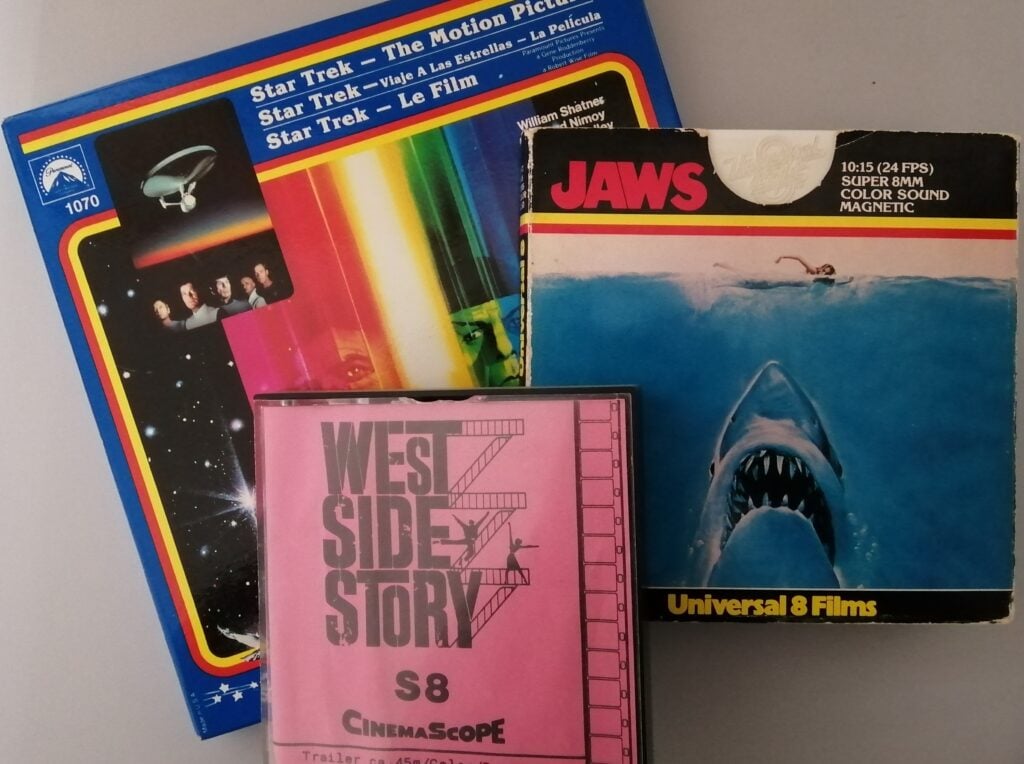
After all, this is about the romanticism of allowing yourself to be hypnotized by the mechanics of a persistent turning feeder reel and take-up spool, or memories of wandering down to your local fleapit for a double-bill feature in the 1970s; all those things of which Quentin Tarantino was reminding us in Grindhouse. It’s also about analogue warmth, a gently meandering weave as the film passes through the gate, the sumptuous contrast and depth of field, and picture grain so dense you can bathe in it. The greatest travesty of the past 30 years has been the slow, miserable decline of film. Let’s all play a part in keeping it alive!
This article was updated and repurposed from similar pieces I wrote for Home Cinema Choice and Cinema Technology magazines – https://www.hometheaterforum.com/wp-content/uploads/2020/07/the-manor-steinway-lyngdorf-tv-movie-music-home-theater-cinema-4-4K-scaled-1.jpg
Martin, a seasoned journalist and AV expert, has written for several notable print magazines. He’s served in key roles at Lucasfilm’s THX Division, NEC’s digital cinema division, and has even consulted for DreamWorks. Despite his illustrious career, Martin remains rooted in his passion for cinema and acting, with notable appearances in several Spielberg films, Doctor Who, and Star Wars: The Empire Strikes Back. He currently resides in San Francisco.
Post Disclaimer
Some of our content may contain marketing links, which means we will receive a commission for purchases made via those links. In our editorial content, these affiliate links appear automatically, and our editorial teams are not influenced by our affiliate partnerships. We work with several providers (currently Skimlinks and Amazon) to manage our affiliate relationships. You can find out more about their services by visiting their sites.


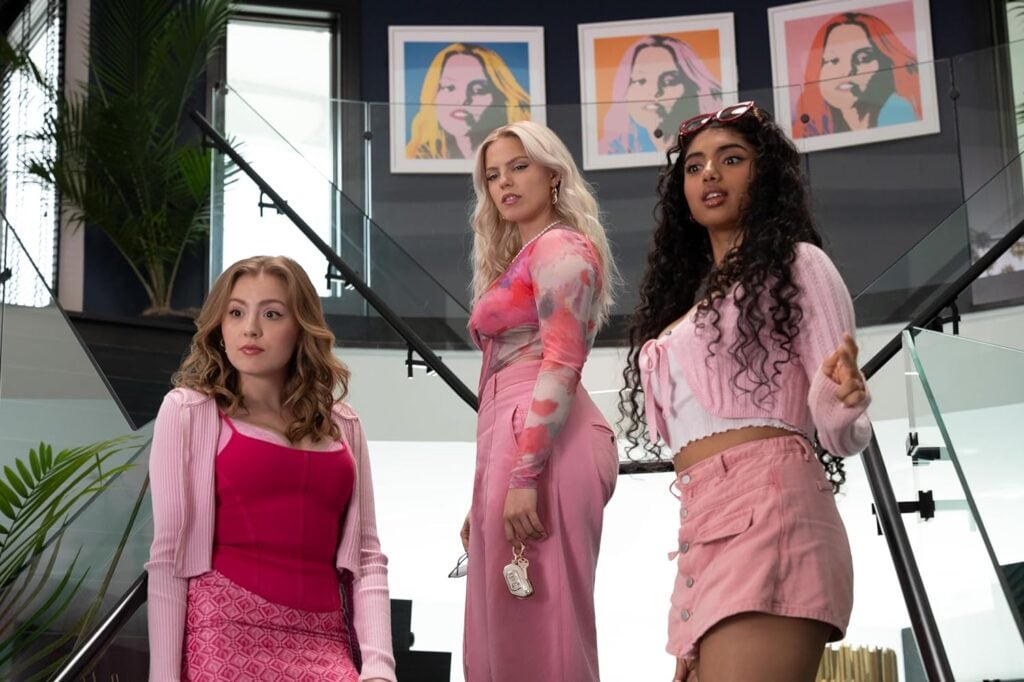
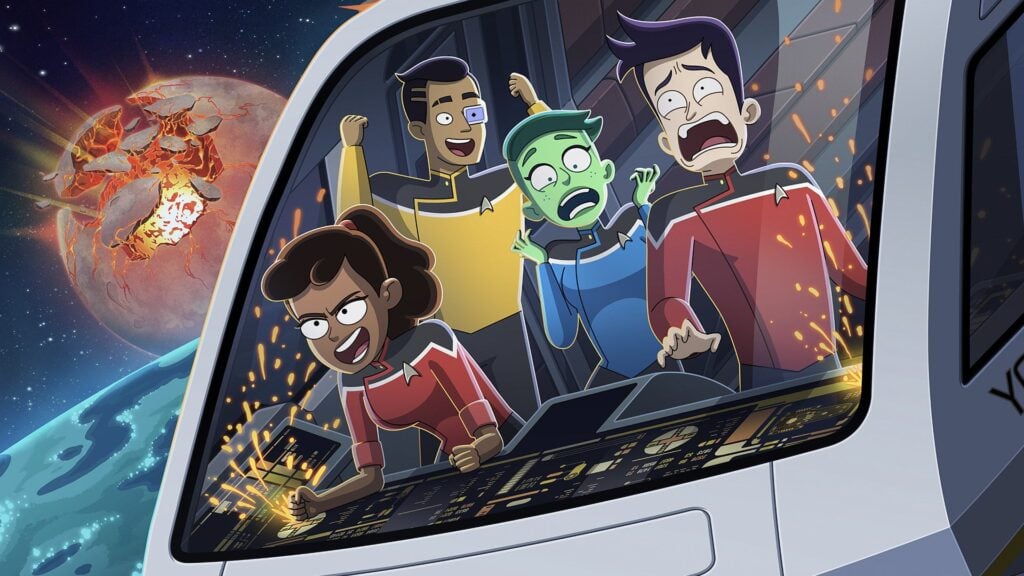
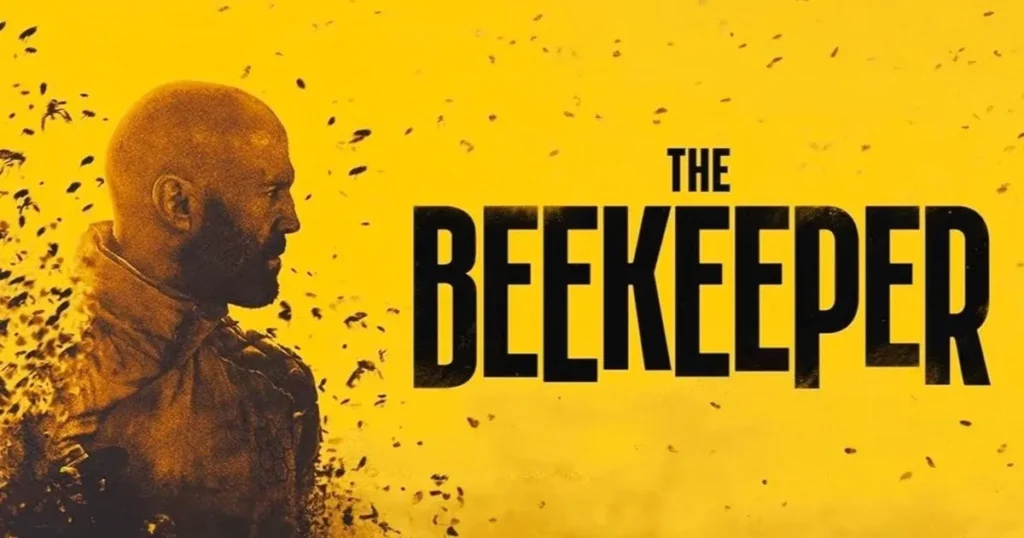

Similar threads